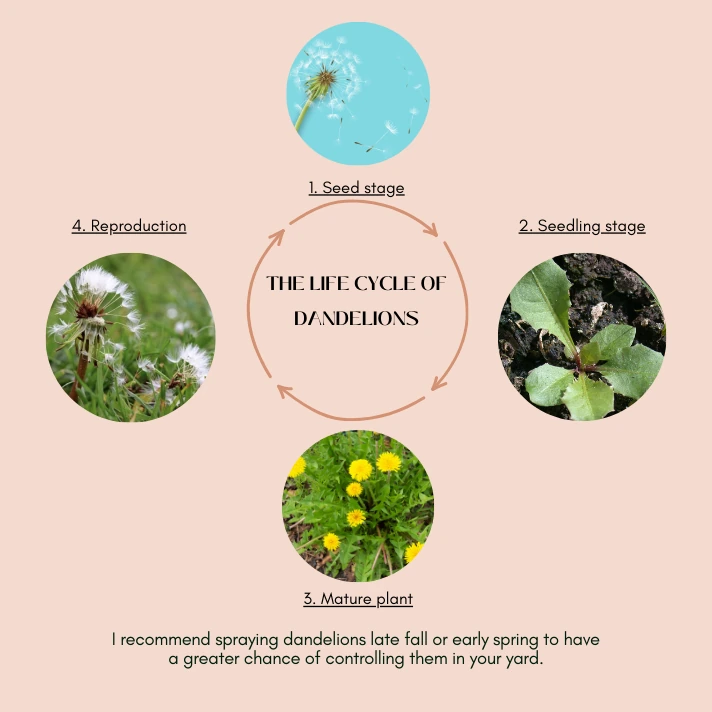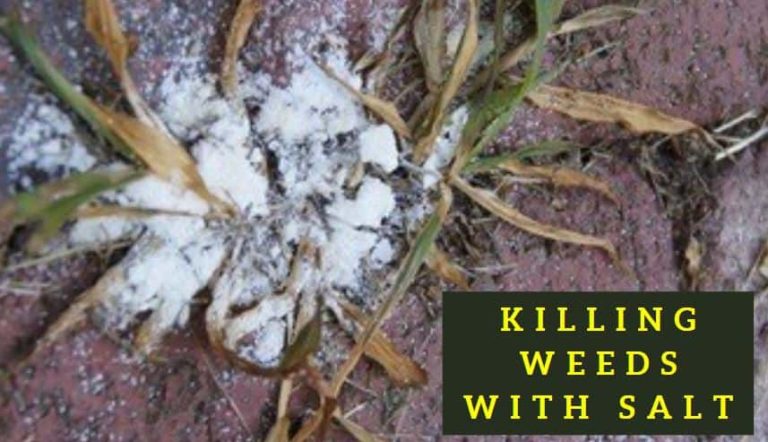Best Time to Spray Dandelions? When is it Too Late?
Dandelions are tough to control because their life cycle leads to their multiplication to a level that can take over your lawn. However, if you apply the right herbicide at the right time, you’ll control these weeds and prevent them from coming back next season.
So, when should you apply a dandelion killer and when is it too late?
The recommended time to spray dandelions is in the fall and early spring. In the fall, dandelions shed their leaves to conserve water and nutrients for winter, making it easy to kill them to the root. You can also spray dandelions in early spring before the young shoots develop a strong root system.
The dandelion problem
Dandelions pose two major problems in lawns and gardens:
- They’re unsightly: Dandelions grow in lawns and produce bright yellow flowers that can make your lawn or garden unpleasant to look at. If you fail to control dandelions for 2-3 successive seasons, these flowers will emerge in the spring and take over your lawn.
- They compete for nutrients: Dandelions germinate in early spring when the soil temperature is still as low as 50°F. This early germination gives them the advantage to outcompete grass and other desirable plants for resources such as nutrients, water, and sunlight.
The life cycle of dandelions
The life cycle of dandelions consists of 4 stages: seed, seedling stage, mature plants, and reproduction stage.

1. Seed stage
The weeds start their life cycle as seeds that are dispersed by wind and human activity in lawns and gardens. For example, if you mow your lawn and use the clippings for mulching, you’re likely to spread dandelion seeds all over the yard.
Note that dandelions have no seed dormancy but the seeds can remain viable for up to 9 years.
If you suspect you have plenty of dandelion seeds in your lawn, spray a dandelion pre-emergent before the onset of spring to prevent their germination. Dithiopyr and Isoxaben 75WG are great pre-emergent herbicides you can rely on to prevent dandelions in your lawn and garden.
Dandelions can also reproduce vegetatively from their tap root so it is possible to still see some of them emerge even after spraying a pre-emergent herbicide in your yard.
2. Seedling stage
Dandelion seeds germinate into seedlings when the soil is moist and the temperature is at least 50 °F. However, the optimum temperature for germination is 77°F. Sunlight is also required for this process. The seedlings develop into small, leafy shoots with shallow tap roots.
Dandelions can also grow from buds. In the fall, dandelions shed off their leaves to conserve water and sugar for the winter. They remain dormant all through the winter season and in the spring, small buds appear on the upper parts of the roots. The buds grow into new weed plants.
The seedling stage occurs in early spring (late March – April), which is one of the best times to spray and kill dandelions in your garden while they are still young, tender, and vulnerable to herbicide activity.
3. Mature plant stage
Young shoots soon develop into mature plants with a rosette of leaves at the base. The taproot also grows much deeper into the soil to anchor the plant strongly. Soon, mature dandelions produce bright yellow flowers that transform into round, fluffy seedheads upon maturity.
I do not recommend spraying dandelions during their maturity stage in their life cycle, as the effectiveness of the herbicide is not the best.
I prefer uprooting mature dandelions using a weed puller but this only works if you have a few cases of dandelion weeds in your lawn. Otherwise, applying a herbicide is more effective when the infestation is extensive.
4. Reproduction stage
Dandelion flowers develop into seedheads containing seeds. The seedheads disperse seeds by wind, with the seeds being windborne for several miles.
According to this article by Duke University, “each flower head has 150-200 florets, and each floret produces 1 seed.” Therefore, a single dandelion plant can mature and produce over 100 new plants, which is why the weed can easily take over your garden if not controlled.
It is too late to spray dandelions when they’re already dispersing their seeds. While spraying the correct herbicide can kill mature plants, it will be ineffective at preventing the seeds from germinating during the next season.
However, if you’re mowing your infested lawn, I recommend that you bag the clippings and dump them away to reduce the spread of dandelions on the lawn.
Here’s Neil Bromhall’s time-lapse of a dandelion flower to seedhead:
Other considerations before spraying dandelions
Before you head out into your yard with a sprayer full of dandelion killer, consider that the timing should also be good to prevent harming desirable plants. Here are important considerations:
- Time of day: The best time of day to spray dandelions is in the morning when there’s no wind and rain forecast for at least 24 hours. During the early hours of the day, the plant will actively absorb the herbicide at a higher rate than when the sun is hot or late in the evening.
- Weather: In my experience, weather affects the effectiveness of herbicides. For example, liquid herbicides evaporate easily in hot, dry weather, making them less effective. I recommend applying a dandelion killer when the weather is cool and moist with no rain forecast for at least 24 hours.
When is the best time to spray dandelions?
It is best to spray dandelions in the fall when most weed seeds are germinating. In the fall, dandelions shed off their leaves to conserve water and nutrients. At this time, dandelions transfer their sugars from the leaves to the roots for winter storage.
So, spraying at this time, the herbicide will infiltrate down to the roots alongside the sugars. The herbicide will then destroy the long taproots leading to the death of dandelions.
When is it too late to spray dandelions?
Spraying dandelions in the winter will be too late. Dandelions shed off their leaves in the fall to conserve water and nutrients for the winter season. Therefore, in the winter, there will be no leaves to spray.
In spring, buds grow on the upper part of the roots. The bud crowns regenerate into new growth of dandelions.
Should I spray dandelion killer before or after mowing?
You can spray the dandelion killer either before or after mowing. There are two significant herbicides that you can spray either before or after mowing. That is:
- Pre-emergent dandelion killers
- Post-emergent dandelion killers
Pre-emergent dandelion killers
Pre-emergent dandelion killers disrupt the germination and growing process of weed seeds. Apply your pre-emergent dandelion killers after mowing and watering the lawn for about 3 weeks. Here is the procedure for applying pre-emergent herbicides:
- Choose either granular or liquid pre-emergent herbicides.
- Apply the herbicide to the lawn surface.
- Water the lawn for around three weeks to activate the ingredients of the herbicides.
- Apply pre-emergent herbicides either in the winter or fall. This is to hinder the germination of dandelion seeds.
- Always pre-emergent before the dandelions start growing. Once they grow, it will be useless to use pre-emergent dandelion killers.
Post-emergent dandelion killers
Apply post-emergent dandelion killers before mowing. Post-emergent dandelion killer already existing weeds. There are two categories of post-emergent herbicides:
- Selective herbicides: these only kill specific weeds.
- Non-selective herbicides: they non-selectively kill all the plants that they land on.
Here is the procedure:
- Choose either liquid or granular post-emergent herbicides.
- Apply before mowing when dandelions start growing.
- Using dandelion-killer chemicals saturate the soil, especially at the base of the dandelion.
- Spray well all the exposed parts of the dandelions. Avoid leaving patches with dandelions that may lead to regrowth and redistribution of the obnoxious weed.
Conclusion
The best time to spray dandelions is early morning when the temperatures are cool and there’s no rain forecast for at least 24 hours. Spray a broadleaf weed killer when the dandelions are still young and tender to kill them with greater success.
It will be too late to spray dandelions in the winter when the weeds are dormant. Also, mature plants have well-developed tap roots (about 8-16 inches deep) that can be difficult to kill off.


![How to Get Rid of Weeds in Mulch Beds [+ Stop Them]](https://gardenine.com/wp-content/uploads/2021/02/Weeds-in-Mulch-Beds-control-and-killing-weeds-in-mulch-beds.jpg)

